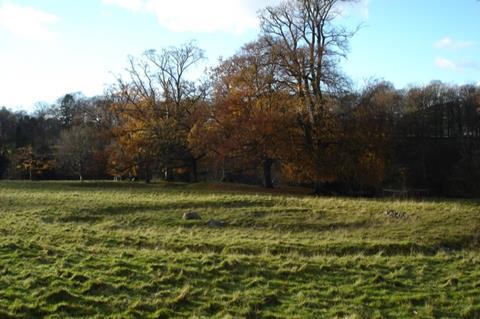Researchers at the Francis Crick Institute have identified three 4,000-year-old British cases of Yersinia pestis, the bacteria causing the plague – the oldest evidence of the plague in Britain to date, reported in a paper published in Nature Communications.

Working with the University of Oxford, the Levens Local History Group and the Wells and Mendip Museum, the team identified two cases of Yersinia pestis in human remains found in a mass burial in Charterhouse Warren in Somerset and one in a ring cairn monument in Levens in Cumbria.
They took small skeletal samples from 34 individuals across the two sites, screening for the presence of Yersinia pestis in teeth. This technique is performed in a specialist clean room facility where they drill into the tooth and extract dental pulp, which can trap DNA remnants of infectious diseases.
They then analysed the DNA and identified three cases of Yersinia pestis in two children estimated to be aged between 10-12 years old when they died, and one woman aged between 35-45. Radiocarbon dating was used to show it’s likely the three people lived at roughly the same time.
Late Neolithic and Bronze Age
The plague has previously been identified in several individuals from Eurasia between 5,000 and 2,500 years before present (BP), a period spanning the Late Neolithic and Bronze Age (termed LNBA), but hadn’t been seen before in Britain at this point in time. The wide geographic spread suggests that this strain of the plague may have been easily transmitted.
This strain of the plague – the LNBA lineage – was likely brought into Central and Western Europe around 4,800 BP by humans expanding into Eurasia, and now this research suggests that it extended to Britain.
Using genome sequencing, the researchers showed that this strain of the Yersinia pestis looks very similar to the strain identified in Eurasia at the same time.
The individuals identified all lacked the yapC and ymt genes, which are seen in later strains of plague, the latter of which is known to play an important role in plague transmission via fleas. This information has previously suggested that this strain of the plague was not transmitted via fleas, unlike later plague strains such as the one that caused the Black Death.
Because pathogenic DNA – DNA from bacteria, protozoa, or viruses which cause disease – degrades very quickly in samples which might be incomplete or eroded, it’s also possible that other individuals at these burial sites may have been infected with the same strain of plague.
Deaths from trauma
The Charterhouse Warren site is rare as it doesn’t match other funeral sites from the time period – the individuals buried there appear to have died from trauma. The researchers speculate that the mass burial wasn’t due to an outbreak of plague but individuals may have been infected at the time they died.

Pooja Swali, first author and PhD student at the Crick, said, “The ability to detect ancient pathogens from degraded samples, from thousands of years ago, is incredible.
”These genomes can inform us of the spread and evolutionary changes of pathogens in the past, and hopefully help us understand which genes may be important in the spread of infectious diseases. We see that this Yersinia pestis lineage, including genomes from this study, loses genes over time, a pattern that has emerged with later epidemics caused by the same pathogen.”
Pontus Skoglund, group leader of the Ancient Genomics Laboratory at the Crick, said, “This research is a new piece of the puzzle in our understanding of the ancient genomic record of pathogens and humans, and how we co-evolved.
“We understand the huge impact of many historical plague outbreaks, such as the Black Death, on human societies and health, but ancient DNA can document infectious disease much further into the past. Future research will do more to understand how our genomes responded to such diseases in the past, and the evolutionary arms race with the pathogens themselves, which can help us to understand the impact of diseases in the present or in the future.”







No comments yet